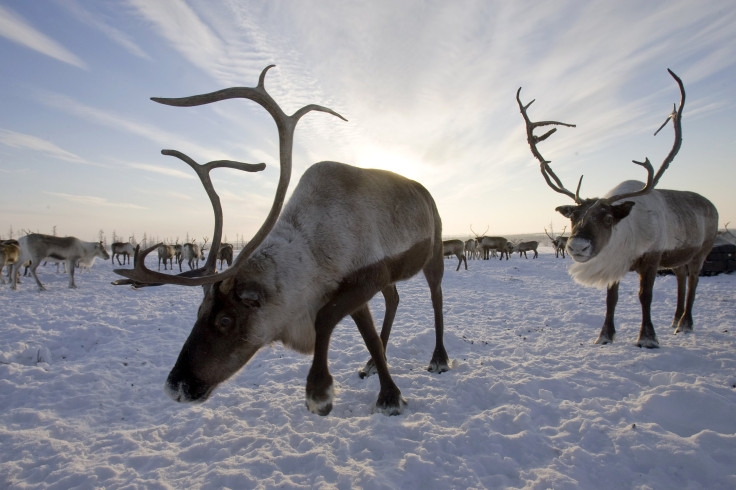Climate Change Killing Reindeer? Over 80,000 Deaths In Russia Linked To Retreating Arctic Sea Ice

Unusual weather linked to climate change was responsible for the death of tens of thousands of reindeer in Arctic Russia. According to a study published Wednesday in the journal Biology Letters, two unseasonal weather events in 2006 and 2013 caused over 81,000 reindeer to starve to death as their food supply was cut off — events that not only significantly cut down the reindeer population in northwest Russia, but also threatened the livelihood of the nomadic herders in the region.
In 2006 and 2013 — both years when ice in the Barents and Kara seas began retreating in early November — the Yamal Peninsula in northwest Siberia witnessed heavy rainfall in autumn. As a result of these “rain-on-snow” events, which were caused by an uptick in evaporation of sea ice melt, the rain-drenched snow froze to form a thick crust over the grass and lichen the reindeer usually feed on.
“Reindeer are used to sporadic ice cover, and adult males can normally smash through ice around 2 centimetres thick,” lead author Bruce Forbes from the University of Lapland in Finland, told New Scientist. “But in 2006 and 2013, the ice was several tens of centimetres thick.”
The 2013 event, which led to the death of roughly 61,000 reindeer — about 22 percent of the 275,000 reindeer in the Yamal Peninsula — was the worst in the memory of the herders in the region, many of whom were forced to resort to fishing.
“The reason the 2013 event was so catastrophic was that heavy rains saturated much of the snow cover from top to bottom, so when air temperatures plummeted the pastures were frozen beneath a thick, heavy layer of ice,” Forbes said in a statement. “This left animals locked completely out of pastures across the entire southern Yamal Peninsula, an area covering some 27 000 square kilometers.”
The worry is that such a famine may take place again this year, given that the Arctic sea ice shrank to its second-lowest level since monitoring began in September. Last month, sea ice in the region covered an area of roughly 2.5 million square miles — the lowest October ice cover on satellite record, and the growth remains sluggish even now.
“If we see such events again this year, it could mean that they’re becoming more frequent,” Forbes told New Scientist. “Now is the risk window, and if it happens again, it will be a major problem for traditional reindeer herders still suffering from losses in 2013.”
Reindeer are not the only animals bearing the brunt of climate change-induced weather events in the Arctic. A recent study revealed that “earlier sea ice melt in the spring and later ice growth in the fall” was negatively impacting the feeding and breeding capabilities of all 19 polar bear subpopulations in the circumpolar region.
© Copyright IBTimes 2025. All rights reserved.






















